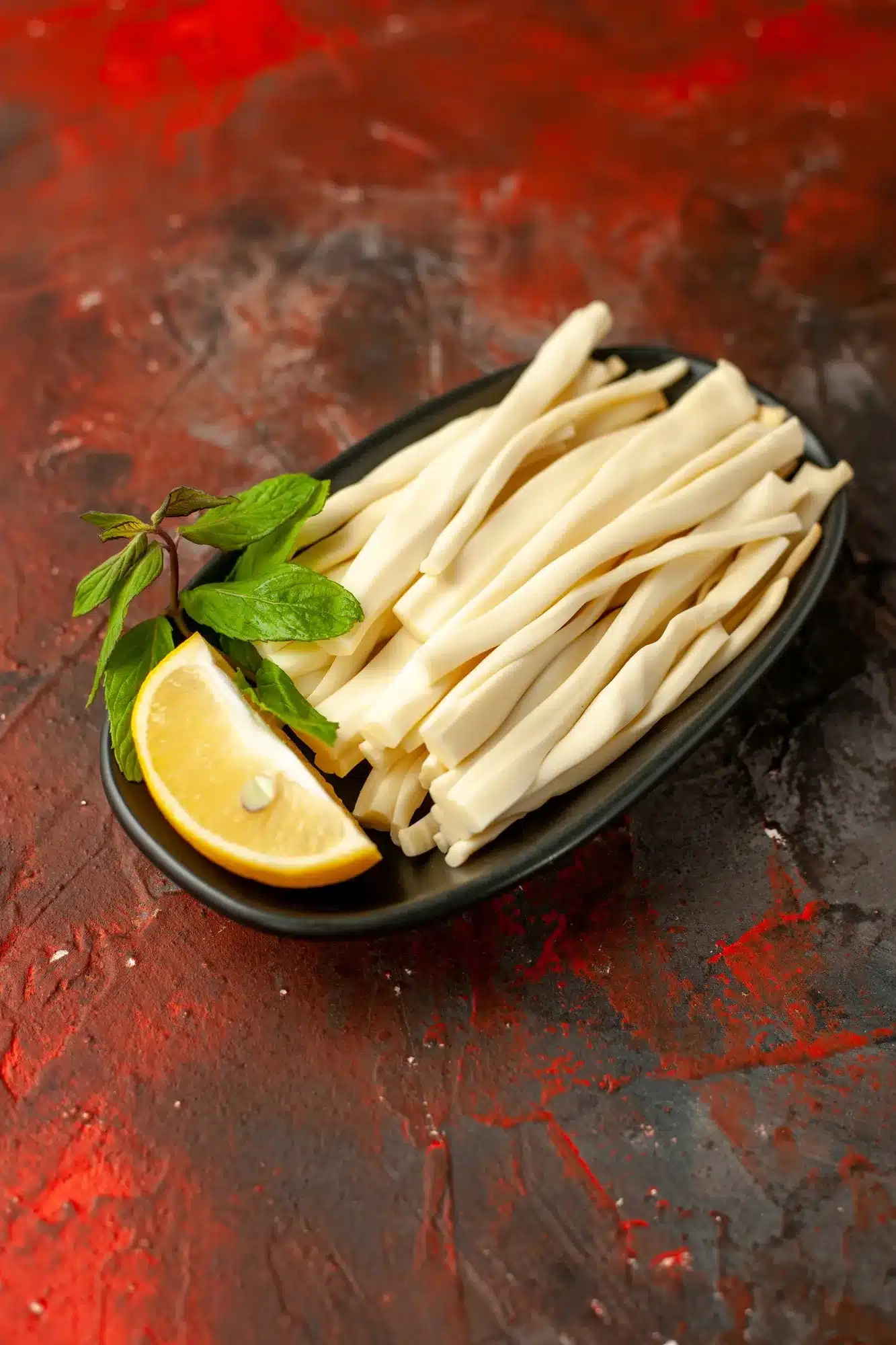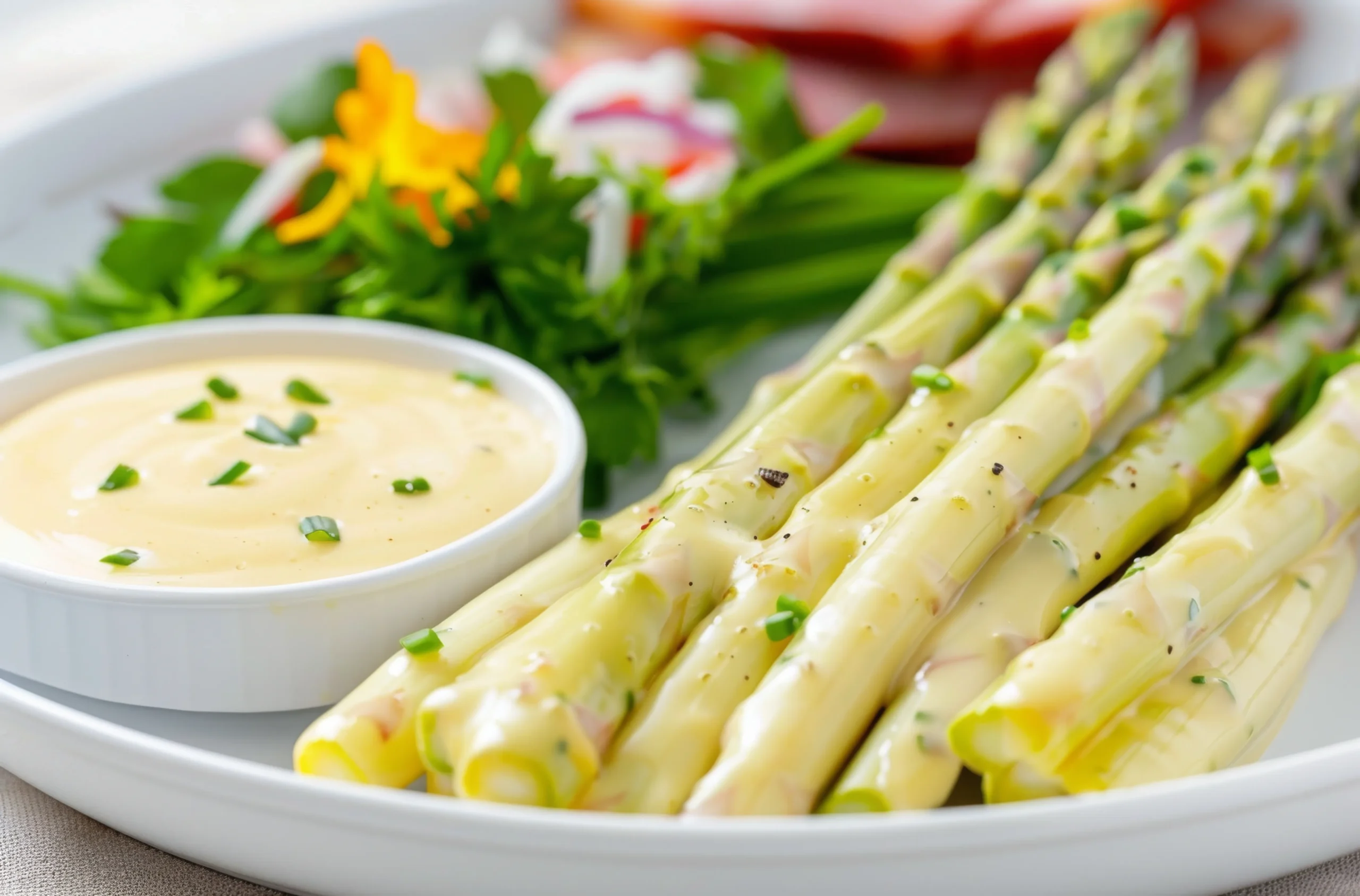Asparagus Asparagus German Recipes— or Spargel, as the Germans call it — crops up in deep roots of German cuisine, and particularly in spring. Called the King of Vegetables, it also heralds warmer temperatures and seasonal fare. White asparagus in particular has a high status, and its harvest is cause for celebration around the country, with festivals, roadside stalls and special restaurant menus dedicated to asparagus dishes.
This culinary obsession goes beyond the taste buds — it’s a cultural phenomenon. Locals crowd farmers’ markets hoping to snag the freshest asparagus, some of which comes from farms in the vicinity. Other vegetable recipes, and if you are like me, who likes to pair fresh vegetables with hearty staples, you can also check out this vegetable stir-fry recipe for inspiration.
Asparagus’s versatility makes it one of those vegetables that works for everything from simple sides to elaborate mains. Its subtle flavor profile complements quintessential German staples like potato and ham or Hollandaise sauce, turning any meal into a culinary experience.
Types of Asparagus in German Cuisine
The green asparagus, though less common in Germany, is increasingly found on restaurant menus because it’s easier to prepare. It is slightly more potent and earthy than its cousin white asparagus and does not need peeling. Grilling or roasting green asparagus is marvelous because the process caramelizes its natural sugars and adds a smoky depth.
Purple asparagus is a less-common type, prized for its deep color and nutty flavor. Usually eaten raw or only lightly cooked so as to keep its crunch and bright looks. As a one-dish meal, you could pair purple asparagus with another seasonal vegetable, as in this vibrant steamed chicken with vegetables.
Whether the spears are thick or thin, green or white, the finger-friendly veggie provides a variety of tastes and textures that are needed in many classic and contemporary German dishes.

Traditional German Asparagus Dishes
German cuisine has a long list of asparagus dishes full of culinary classics. These recipes highlight the versatility of asparagus and how it can take center stage or play a supporting role.
Spargel mit Sauce Hollandaise
Spargel mit Sauce Hollandaise, or white asparagus with Hollandaise sauce, is one of the most beloved culinary ((or should we say delicious)) traditions in Germany! Served with boiled potatoes and either ham or schnitzel, such a dish leaves you satiated and content. The silky sauce and tender asparagus make for a luxe dinnertime experience.
Spargelsuppe (Asparagus Soup)
Asparagus soup is a cozy way to eat this vegetable, because it embraces the chilly days of spring. The soup is usually made from white asparagus with cream, butter and aromatic spices, like nutmeg. Even blending the soup creates a silkiness, and fresh herbs disrupt the sumptuousness with bright flavor.
Spargelsalat (Asparagus Salad)
Or, for something lighter, Spargelsalat is lovely. This salad typically contains boiled asparagus, hard-boiled eggs, and a mustard-and-vinegar dressing. It’s a side dish that’s as good paired with grilled meats as it is served alone, for a healthy meal. Try something similar with this cucumber salad, pairing crisp vegetables with a fresh seasonings.
These classic asparagus dishes demonstrate just how malleable the vegetable is, capable of complementing a variety of flavor profiles and cooking methods.
Cooking Techniques for Perfect Asparagus
Cooking asparagus well begins with knowing its distinctive nature and selecting an appropriate cooking method for the dish you’re making. So here are some tips on how to prepare the vegetable expertly:
- White asparagus: The outer layer of white asparagus is tough and fibrous, so peel it away. Boil or steam it gently for its delicate flavor and tender texture. That’s why adding a touch of sugar and salt to the cooking water will encourage its natural sweetness.
- Green asparagus: This variety does not require peeling, so it is quicker to prepare. Roast or grill it to develop a caramelized flavor, then drizzle with olive oil and a sprinkle of sea salt for an effortless companion.
- Purple asparagus: Cook it lightly or eat it raw in salads to retain the color. The color may fade with overcooking, so keep cooking times short.Adding bold flavors to asparagus dishes is a good way to go if you want to serve asparagus so bland you won’t realize you are eating it at all! Umami sauce recipes can add the zest to an asparagus dish even the most basic ones!
Modern Takes on Asparagus
Though classic recipes are still widely served, innovative German chefs have also adopted new preparation techniques that reinvent asparagus as a versatile modern staple. These recipes strike a balance between the vegetable’s familiar flavors and fun new ones:
- Roasted asparagus with Parmesan: Sprinkled with Parmesan cheese and breadcrumbs before pot-roasting, asparagus can be a quick and savory side dish with a crispy, golden crust.
- Asparagus with smoked salmon: Together, the delicate thin slices of smoked salmon and tender asparagus do make an elegant appetizer or light lunch.
Asparagus in fusion dishes: Cooking a stir-fry, quiche, or pasta? Add asparagus to traditional German cuisine and enjoy a fresh take.

Why did you decide to pair asparagus with German dishes?
Asparagus is a versatile vegetable that works well with many traditional German dishes. Whether served as a side or the main event, it pairs well with the flavors of German fare:
- For a hearty, satisfying meal, combine asparagus with schnitzel or bratwurst.
- Add boiled potatoes doused in melted butter for an easy-to-prepare supporting act.
- Another key addition to the dining experience is to pour a glass of Riesling or Silvaner, both are white wines which work well with asparagus’s delicate flavors.
- Adding asparagus is also a way to ensure you end up with a balanced, flavorful meal when you’re cooking with potatoes, as in this potato salad guide I found helpful.
These matchings demonstrate asparagus’s versatility and ability to brighten a lot of dishes.
Health Benefits of Asparagus German Recipes
Beyond its culinary allure, asparagus boasts a wealth of nutrients that contribute to its status as a healthy dietary choice. It is low in calories, and high in important vitamins and minerals like vitamins A, C, and K, folate, and potassium. Asparagus is also rich in dietary fiber, which is important for digestive health.
The vegetable’s high antioxidant properties work as an anti-inflammatory that can help prevent chronic diseases. Incorporating asparagus into your diet is a great way to add beneficial nutrition to your food while savoring its delicious taste.
Experts Tout Some Health Benefits of Asparagus
Asparagus contains antioxidants, which help fight inflammation and nourish cells, as noted by National Institutes of Health (NIH).
Its high fiber content promotes digestive health and balanced gut bacteria, according to the Mayo Clinic.
Asparagus also features strong antioxidants that work to fight inflammation, per Harvard T.H. Chan School of Public Health.
Conclusion: an Asparagus-Fueled Spring
Asparagus German Recipes is a culinary light of spring in Germany, from classic preparations like Spargel mit Sauce Hollandaise to contemporary renditions. Food lovers cannot miss it due to its taste, nourishment that it provides and significance in the culture.
Add these recipes and techniques to your repertoire, and taste the fullness of asparagus season — tradition with a twist.


1 thought on “Asparagus German Recipes: A Springtime Delight”